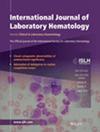Single-Cell Transcriptome Analysis Reveals the Effect of MIF on Myeloid-Derived Suppressor Cells in Multiple Myeloma
Abstract
Introduction
Multiple myeloma (MM) is a highly lethal hematologic malignancy. Myeloid-derived suppressor cells (MDSCs) exert vital effects on myeloma cells in the bone marrow microenvironment. Macrophage migration inhibitory factor (MIF) is a chemokine-like inflammatory cytokine that can not only prevent the free movement of macrophages but also regulate innate and adaptive immune responses. This study intends to explore the relationship between MIF and MDSCs in the bone marrow microenvironment.
Methods
Single-cell RNA sequencing (scRNA-seq) analysis was performed based on the GSE124310 dataset (containing the MM and normal samples). Cell types were annotated using the feature genes collected from CellMarker 2.0. Ligand-receptor pairs for communication between MDSC subsets and other cells were inferred using CellChat. Characterizations of relevant cells were determined by flow cytometry.
Results
scRNA-seq analysis showed that 10 cellular subsets were annotated. Based on the differential expression of MIF, MDSCs were divided into two subsets, MIF+MDSCs and MIF−MDSCs. There was a difference in the ratios of MIF+MDSCs and MIF−MDSCs between the MM and Normal groups. Cell communication analysis showed that MIF+MDSCs and Plasma cells had low signal intensity in the RETN-CAP1 pathway, while MIF−MDSCs and Plasma cells had high signal intensity in the RETN-CAP1 pathway. Flow cytometry assay showed that RETN, Arg-1, and iNOS expression in MDSCs was significantly increased in the MM group compared with the normal group, and RETN, Arg-1, and iNOS expression was higher in MIF+MDSCs than that in MIF−MDSCs. CAP1 expression in Plasma cells was significantly elevated in the MM group compared with the Normal group.
Conclusion
MIF is high-expressed in MM patients and could be correlated with MDSCs in the bone marrow microenvironment.

 求助内容:
求助内容: 应助结果提醒方式:
应助结果提醒方式:


